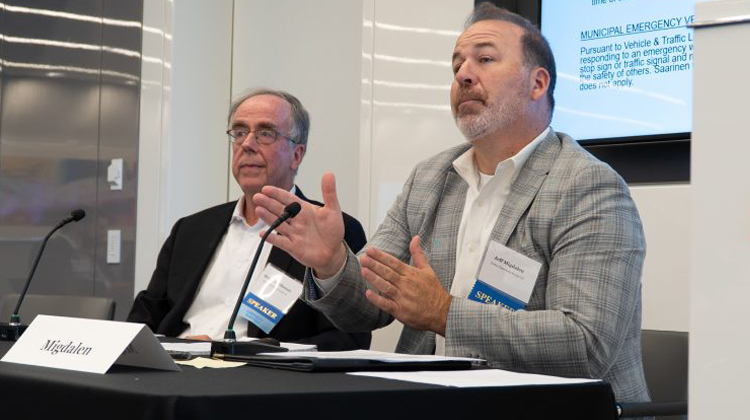Coincidentally, this year’s AIRROC summer meeting was held in New York City. Brian McElhenny and Jeffrey Migdalen, from the Gerber Ciano law firm, treated participants to a presentation highlighting the frequent litigation against New York State municipalities for various torts. These include motor vehicle accidents involving municipal vehicles or emergency vehicles, motor vehicle accidents where the municipality is sued for negligence in the maintenance and design of the roadway, premises based accidents in trip and fall scenarios on municipal sidewalks or roadways, accidents in municipal parks, claims of sexual abuse by employees, and in municipalities which have their own police department alleging false arrest and malicious prosecution.
Historically, municipalities relied on defenses like Qualified Immunity, especially in highway safety planning. However, recent court rulings have narrowed this defense, requiring specific studies on negligence claims rather than general area studies.
In a recent case, multiple complaints had been presented to the City concerning vehicles speeding on the roadway. The Department of Transportation studied intersections on the roadway concerning the need for installation of traffic signals. They did not study some of the solutions advanced by plaintiff’s expert to prevent speeding but did notified the police to enforce the law concerning speeding motorists. The City was found 40% liable for not addressing speeding issues adequately, resulting in a $7M liability for future medical expenses and 40% of $10M for pain and suffering. The Appellate Division and Court of Appeals affirmed liability, rejecting the City’s defense of Qualified Immunity.
In New York, emergency vehicles such as a police car, fire truck or ambulance while responding to an emergency with lights and sirens are not liable for ordinary negligence unless operating recklessly. Without lights and sirens, immunity does not apply.
Municipal defendants can use defenses like plaintiff’s comparative negligence, lack of causation, and procedural defenses. Article 16 of New York’s CPLR limits municipal liability under certain conditions, especially when co-defendants have inadequate insurance for a serious accident. When a plaintiff seeks to recover from the municipality for negligent road design or maintenance, if the municipality is 50% or less liable then it only pays its share of the pain and suffering award, however it is jointly and severally liable for special damages such as loss of wages and medical expenses. There are also a variety of procedural defenses available to municipalities, such as shorter statute of limitations and venue requirements to name a few.
Despite these defenses, municipalities face increased scrutiny from jurors, leading to large verdicts and accountability for their actions.
